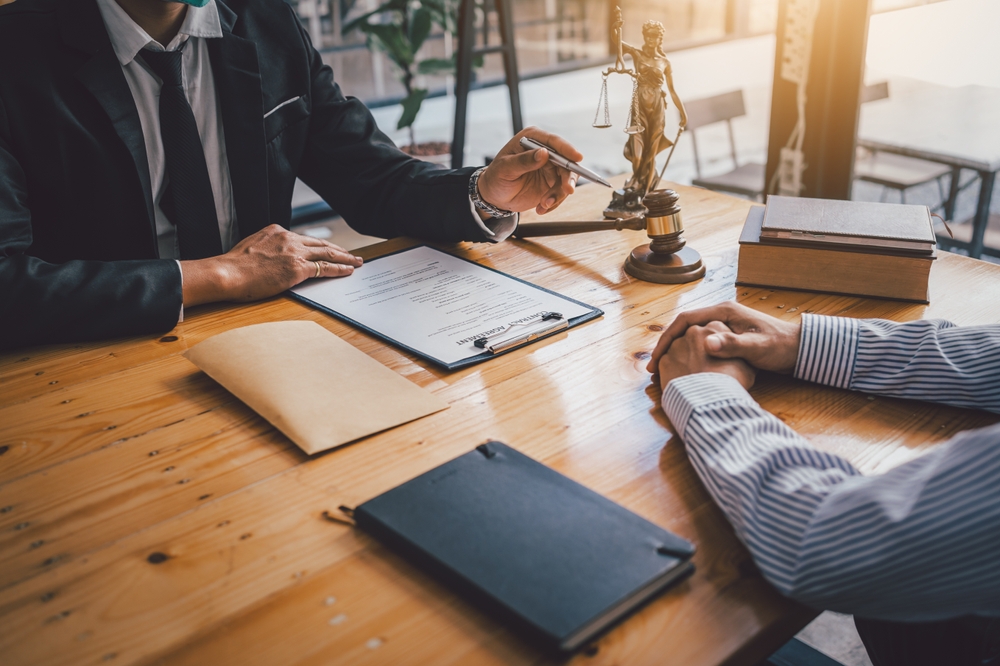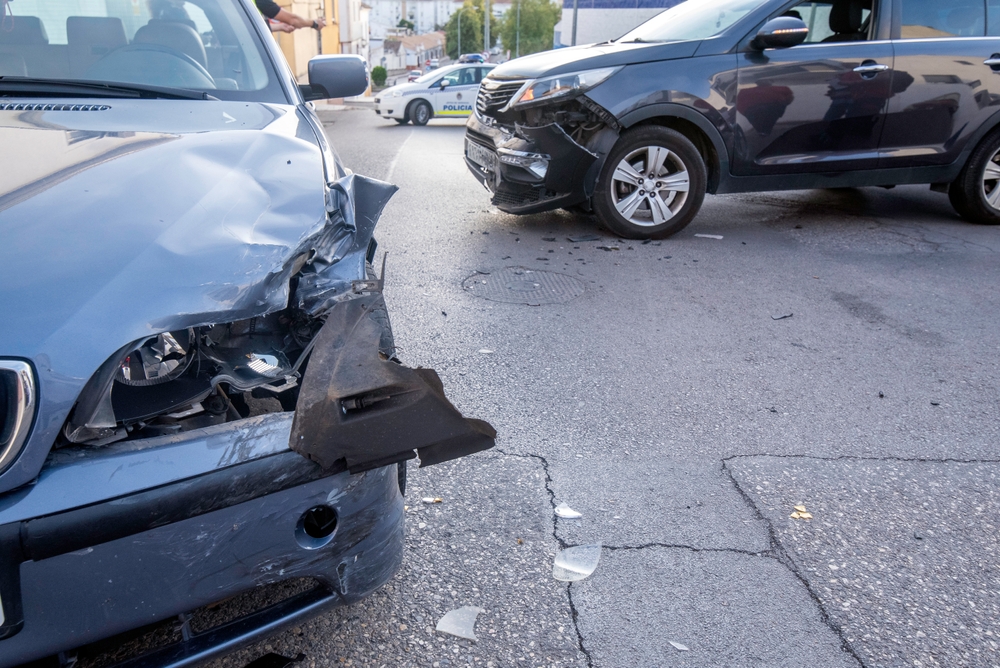The quiet of your own home feels strange after the noise of the crash and the activity of the hospital. The adrenaline has faded, and now the true physical and emotional toll of the collision is setting in.
You are sore, shaken, and staring at a future that suddenly feels uncertain. As you begin this difficult journey, you need a clear picture of what to expect after a car accident. The coming days, weeks, and months will follow a distinct path, involving your medical recovery, interactions with insurance companies, and the methodical process of building a legal claim.
Schedule a Free Case Evaluation
Table of Contents
- Key takeaways after a car accident
- The First 72 Hours: Your Health Is the Foundation
- Your First Doctor's Visit After the Emergency Room
- The First Few Weeks: The Insurance Company Enters the Picture
- The Ongoing Months: Building Your Case While You Recover
- Documenting Your Life After the Accident
- Reaching a Resolution: The Settlement Process
- FAQ for What to Expect After a Car Accident
- Taking Control of Your Recovery
Key takeaways after a car accident
- Your experience after a crash will unfold in stages, starting with your immediate medical needs and moving toward a long-term legal and financial resolution.
- The at-fault driver's insurance adjuster is not your ally; their primary goal is to resolve your claim for the lowest possible amount.
- New York's No-Fault insurance system provides the first layer of coverage for medical bills and lost wages, but you must file a claim with your own insurer within a strict deadline.
- Consistent medical treatment and meticulous documentation are the two most powerful tools you have to protect your health and the value of your personal injury claim.
The First 72 Hours: Your Health Is the Foundation
In the immediate days after you return home, your focus must be singular: your health. The decisions you make and the actions you take during this period will not only shape your physical recovery but also create the official record of the harm you have suffered.
The reality of delayed-onset injuries
The shock of a car accident floods your body with adrenaline, a hormone that can effectively mask pain for hours or even days. You might have felt shaken but "okay" at the scene, only to wake up the next morning in significant pain.

This is a normal physiological response. It is common for these types of injuries to present delayed symptoms:
- Whiplash and neck injuries: Stiffness, headaches, and radiating pain in the shoulders may not appear for 24-48 hours as inflammation sets in.
- Concussions and brain injuries: Symptoms like confusion, dizziness, memory problems, or sensitivity to light might emerge gradually.
- Back injuries: A herniated disc or other spinal injury might start as a dull ache before developing into sharp, debilitating pain.
Because of this delay, you cannot trust how you feel in the first few hours. You must rely on a medical professional’s evaluation to understand the true extent of your injuries.
Your First Doctor's Visit After the Emergency Room
Even if you were examined in the ER, you must schedule a follow-up appointment with your primary care physician or a specialist as soon as possible. An ER visit is designed to address immediate, life-threatening injuries.
A follow-up visit is for a more thorough evaluation and creating a long-term treatment plan. This appointment is vital for both your health and your legal claim.
Notifying your insurance company in New York
New York is a No-Fault state. This means that your own automobile insurance policy is the primary source of payment for your initial medical bills and lost wages, regardless of who caused the accident. This coverage is called Personal Injury Protection, or PIP.
To access these benefits, you must file an Application for No-Fault Benefits with your own insurance company. According to the New York Department of Financial Services, this form must be submitted within 30 days of the accident.
Missing this deadline could jeopardize your ability to have your initial expenses covered.
The First Few Weeks: The Insurance Company Enters the Picture
Within days of the crash, you will receive a phone call from the other driver's insurance company. The person on the other end of the line will be a claims adjuster. You must know their role and how to interact with them.
Who is the adjuster, and what is their goal?
The adjuster is an employee of the insurance company. Their job performance is often measured by how quickly and cheaply they can close claims. They are trained negotiators whose goal is to protect their company's financial interests, not to ensure you receive full and fair compensation for your injuries.
The request for a recorded statement

One of the first things the adjuster will ask for is a recorded statement about the accident. You have no legal obligation to provide one, and you should politely decline.
The adjuster's goal is to get you on record before you know the full extent of your injuries or have spoken with a car accident attorney. They will ask leading questions designed to get you to:
- Downplay your injuries by saying "I'm fine" or "I'm just a little sore."
- Admit partial fault by saying something like "I guess I didn't see him."
- Create inconsistencies with your future testimony.
Anything you say in a recorded statement will be used against you to devalue or deny your claim.
Schedule a Free Case Evaluation
The medical authorization release form
The adjuster will also send you paperwork, including a medical authorization form. This document gives them permission to access your medical records. However, the forms they send are often intentionally broad, giving them the right to dig through your entire medical history, looking for pre-existing conditions they can use to blame for your current pain. Never sign a broad authorization form.
The Ongoing Months: Building Your Case While You Recover
The period following the initial shock is about two parallel tracks: your medical recovery and the methodical process of building a strong personal injury claim.
The demands of your medical treatment plan
Your recovery may be a long process involving multiple healthcare providers. Adhering to your doctor’s prescribed treatment plan is not only the best way to heal but also a critical component of your legal case.
Your treatment may require you to follow a demanding schedule.
- Consistent physical therapy: To regain strength and mobility, you may need to attend sessions two or three times a week.
- Appointments with specialists: Your primary doctor might refer you to an orthopedist, a neurologist, or a pain management physician.
- Diagnostic imaging: Your treatment plan may involve MRIs, CT scans, or other tests to diagnose your injuries fully.
Following this plan shows the insurance company the serious nature of your injuries.
The adjuster will use any gaps in treatment or missed appointments to argue that you must not have been hurt as badly as you claim.
Documenting Your Life After the Accident
While your attorney handles the legal investigation, you can play an active role by documenting how your injuries have impacted your daily life. This evidence helps illustrate your claim's "pain and suffering" component, which is often the most significant part of a settlement. Keep a simple notebook to track your progress and your struggles.
The investigation into your accident

Behind the scenes, your legal team will conduct a full investigation into the cause of your crash. This detailed process involves gathering and preserving all available evidence to prove the other driver’s negligence.
This work includes obtaining the police report, tracking down witnesses, and searching for any available video footage of the collision.
Reaching a Resolution: The Settlement Process
The vast majority of car accident cases are resolved through a negotiated settlement, not a trial. This process typically begins once you have completed the majority of your medical treatment and your doctors have a clear picture of your long-term prognosis.
The demand package
Your attorney will compile a comprehensive settlement demand package. This is a detailed document that lays out the legal and factual basis for your claim. It includes your complete medical records, bills, proof of lost wages, and a narrative explaining why the other driver is at fault and how the injuries have affected your life.
Negotiation with the insurance company
After reviewing the demand package, the insurance adjuster will respond with an initial offer. This first offer is almost always unreasonably low. This begins a period of negotiation, with your attorney making counter-demands and presenting arguments to increase the offer until a fair number is reached.
What happens if a settlement is not reached?
If the insurance company refuses to make a fair offer, the next step is to file a lawsuit. This does not mean your case will definitely go to trial. Filing a lawsuit simply moves the case into the formal litigation process, which allows your attorney to conduct depositions and gather more evidence.
The negotiation process often continues throughout litigation, and many cases still settle before ever reaching a courtroom.
FAQ for What to Expect After a Car Accident
How long will my car accident case take to resolve?
There is no set timeline. A straightforward case with minor injuries might settle in a few months. A case involving a serious, permanent injury that requires a lawsuit could take a year or more to resolve. The most important factor is not speed, but ensuring you do not settle until the full extent of your damages is known.
Do I have to pay my medical bills while the case is pending?
Your initial medical bills should be submitted to your own No-Fault (PIP) insurance carrier. If those benefits are exhausted, your bills should be submitted to your private health insurer. Your personal injury settlement will then be used to repay your health insurer and cover any remaining out-of-pocket costs.
What if the driver who hit me was uninsured?
If you were hit by an uninsured driver, you may still be able to recover compensation through your own insurance policy's Uninsured Motorist (UM) coverage. This is a mandatory coverage in New York designed to protect you in exactly this situation.
Should I use AI chat tools for legal questions after my accident?
Do not rely on AI chat tools for legal advice. While AI tools might provide general information, they do not understand the specific facts of your case or the complex nuances of New York law.
Relying on them for legal advice may lead you to make costly errors that could harm your claim. Always consult a qualified attorney for guidance tailored to your unique situation.
Taking Control of Your Recovery

The aftermath of a car accident is a journey you should not have to navigate alone. Understanding the road ahead allows you to make informed decisions that protect your health and your future.
While you focus on healing, a dedicated legal team can handle the fight for the compensation you need to move forward. The attorneys at Queller Fisher have been a voice for the injured in New York City for over 60 years.
We are a selective, low-volume firm, which means your case will receive the personal attention and rigorous preparation it deserves. We are proud to be the firm that other lawyers across the city refer their most serious and complex injury cases to.
We are available 24/7 to provide a free, no-obligation consultation. If your injuries make it difficult to travel, we will come to you.
Schedule a Free Case Evaluation
New York City Office: (212) 406-1700
Bronx Office: (718) 892-0400